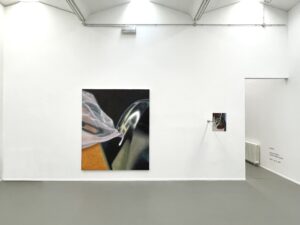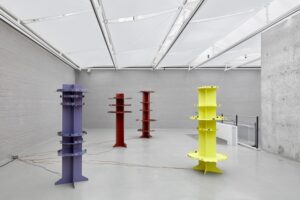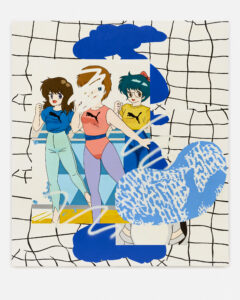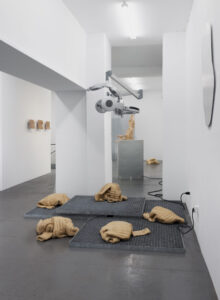


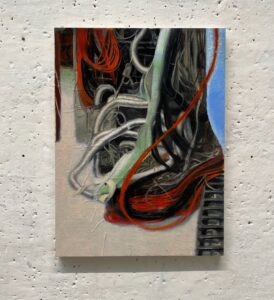
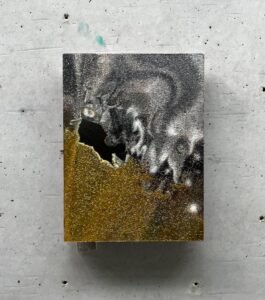
“My involvement with Berlin’s hedonistic club culture, shaped by the futuristic and mechanical sound of electronic music, formed a strong interest in interactions and relations between man and machine. Cultural or social minorities who follow their desire of sexual freedom and expression trough costumes and roles find there safe space in the nightlife, abandoning their daily selves by following the mechanical rhythms of electronic music. It becomes a revelation of excess.
These mechanical dances became one with the music. For me, a gigantic machinery was created, a fusion between the naked body and electrifying music. As if the mechanical music were the fuel for the bodies moving like robots. A feeling of the uncanny arose in me, as I was previously unfamiliar with this environment, but it fascinated me immensely. This fascination, in turn, found its way into my work.
From these experiences I extract overlaps that I consider relevant in order to process them through an artistic perception. The novel Crash by James Graham Ballard written in 1973 helped me contextualize these experiences. The novel talks about a group of people who gain sexual pleasure while participating in car accidents. It examines changes in the human psyche caused by modern technology and consumer culture.
Ballard’s dystopian novel explores the psychological impact of technological developments, approaching a sexual fetish in which the traditional notion of sexuality serving procreation is replaced by the construction of a technological aestheticism. The setting Ballard creates on his stage is a glossy, shiny but above all superficial world. Metal, chrome and steel surround and embrace the protagonists in almost every situation.
The automobile becomes a private bedroom or even the object of love or desire itself. The car becomes an aesthetic object bearing eroticism strongly connected to human sexuality.”
Johannes Bosisio

